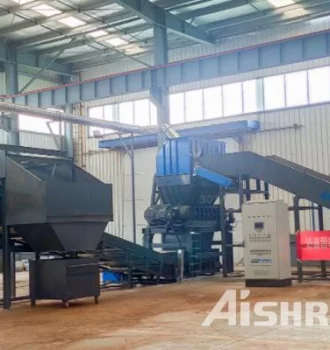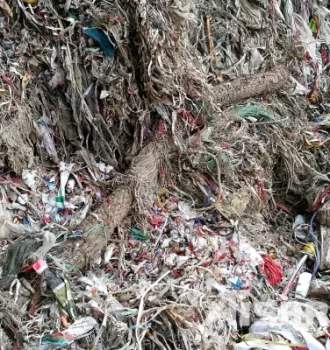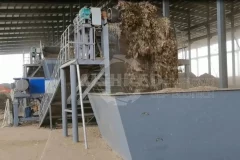
As a trusted manufacturer of shredding equipment, GEP ECOTECH has recently delivered a palm frond shredder to a power station in Thailand. Known for our high-quality machines, we have once again earned the trust and support of our customers.Introduction of the Thailand Palm Frond ShredderShredder Model:GDB115Raw Material: Palm fronds, palm trunks, branches, bagasseCapacity: 8–10 tons per hourRequired Output Size: Around 100 mmApplication: Processed as biomass fuel for boiler use at the power station Key Features of the GDB Palm Frond Shredder1. Dual-Shaft Design:Specifically engineered for handling fibrous and tough materials like palm fronds.Ensures smooth shredding without frequent blockages.2. High Capacity and Efficiency: Capable of processing up to 60 tons per hour, meeting the demands of large-scale operations.3. Customizable Output Size:Delivers uniform particle sizes (50~200 mm) for optimized boiler performance.4. Durable Blades:Made of high-strength alloy steel to handle abrasive biomass materials.5
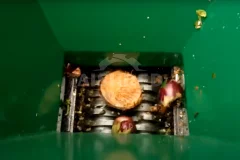
Dry anaerobic fermentation is a new technology that has developed very rapidly in recent years, and has good application prospects in livestock and poultry manure treatment, straw gas production and organic waste treatment. The general treatment method of organic waste is composting, anaerobic fermentation and comprehensive utilization. Organic waste treatment system through crushing, squeezing dry, put into microbial fermentation and other steps, so that organic waste into fertilizer, to achieve the organic waste resource treatment. After fermentation for about a week, it becomes fertilizer for planting vegetables and fruits. Key equipment:Dry anaerobic fermentation pretreatment equipment shredderThe sorted organic waste contains more organic matter, such as rotten fruits, vegetables, meat pieces, etc. Direct anaerobic fermentation of voluminous material in the pipeline or stirring in the fermenter will have an impact on the stable operation of the equipment, while the anaerobic fermentation is not
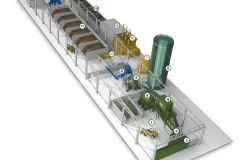
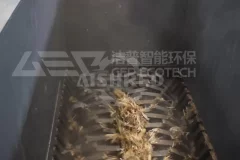
In Malaysia's latest biogas production facility, the introduction of a biomass shredder has proven essential to the processing of organic and green waste. This advanced biomass shredder offers a critical pre-treatment step, re-homogenizing and finely shredding pre-crushed organic waste into fiber-rich, cell-structured particles, which accelerates the decomposition process and optimizes biogas yields.The shredder's ability to produce finely shredded biomass has immediate benefits for biogas production: not only does it increase gas yield, but it also significantly reduces the time materials need to spend in fermentation tanks. This reduction in retention time enhances operational efficiency and contributes to higher profitability for facility operators.With its impact on process efficiency and energy output, the biomass shredder is an invaluable addition to Malaysia's biogas facilities, paving the way for more sustainable and economically viable waste-to-energy solutions in the region.
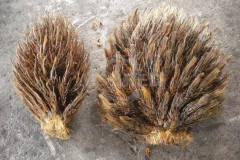
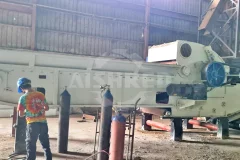
How to Recycle and Reuse EFB?
2024-06-29The production of palm oil in Central and South America and Southeast Asia is an important industry. After the brown ripens, the fruit separates from the stem, leaving an empty fruit bunch (EFB) as a waste. Every year, tens of millions of tons of EFB are generated, and research on the possibility of utilizing this waste is also ongoing.EFB is by-product of oil palm fruit after being pressed, with rich cellulose, hemicellulose, and lignin components. They can be recycled and reused in various ways:1. Composting: EFB can be used as organic material for composting treatment. Through the action of microorganisms, EFB can be decomposed into nutrient rich organic fertilizers for agricultural production, improving soil structure and fertility.2. Biofuels: EFB can be converted into biofuels through technologies such as pyrolysis, gasification, and anaerobic fermentation. For example, pyrolysis can convert EFB into bio oil, biochar, and combustible gases; Anaerobic fermentation can produce biogas.3. Pulp and
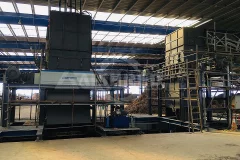
Sugarcane Bagasse Shredder in Thailand
2024-05-03In response to Thailand's sugarcane industry's waste management challenges, a project in Thailand, utilizes GEP ECOTECH dual-shaft shear shredder to process sugarcane bagasse into boiler fuel. With a production capacity of 40 tons per hour, this system efficiently reduces bagasse into uniform particles, ideal for combustion in power plant boilers. Project OverviewGEP ECOTECH's sugarcane bagasse shredder was installed and officially launched in Thailand in mid-July last year. It is mainly used to crush and dispose bagasse, corn straw and rice straw collected in power plants. Currently, the sugarcane bagasse shredder has successfully reached customers' the original design indicators, the output is stable at at least 40 tons per hour, and the discharge size is about 10cm. Let's take a look at the specific performance of GEP ECOTECH's bagasse shredder.Sugarcane Bagasse Shredder introduction At the heart of this project lies the GEP ECOTECH advanced dual-shaft shear shredder, a robust and powerful machine
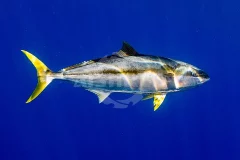
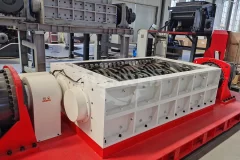
Tuna is an important food and sports fish, and also the most commercially valuable fish in the world. Tuna meat is low in fat and calories, rich in high-quality protein, polyunsaturated fatty acids, and other nutrients that balance the body's needs. But the tuna heads and bones are not easily consumed directly, so how to deal with them?Not long ago, an Australian client consulted us about tuna shredder equipment, which processes tuna heads and bones with a processing capacity of 30TPH. Although this capacity sounds quite large, after repeated confirmation with the customer, these fish heads and bones will be cooked first, and the bones are softer and more brittle, making them relatively easy to shred. The feeding size is tuna heads ≤250mm, tuna bones ≤600mm, and discharge size is about 50mm.After considering these parameters, we have recommended a suitable model of double shaft shearing shredder to the customer. We fully meet the customer's disposal requirements and have communicated with them in both
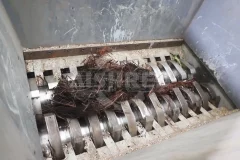
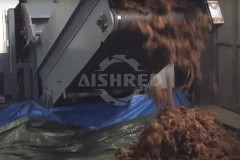
Seaweed, particularly kelp, holds significant potential as a renewable resource for various applications, including food, pharmaceuticals, and biofuels. To harness the benefits of dried seaweed efficiently, a double shaft shredder emerges as a versatile solution for breaking down seaweed into smaller, manageable pieces.Upgraded Double Shaft Shredder to Crush Dried Seaweed/KelpWith a commitment to delivering advanced solutions tailored to specific industry needs, GEP ECOTECH introduces its upgraded double shaft shredder, specifically designed to crush dried seaweed and kelp efficiently. The double shaft shredder stands out as a reliable solution with several key advantages:High-alloy cutting tools offer extended service life and excellent interchangeability.Bearing designed with multiple seals for durability in complex environments.Spindle undergoes rigorous heat treatments and high-precision processing for superior fatigue and impact resistance.Key components crafted from 304 stainless steel for enhanced
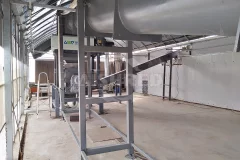
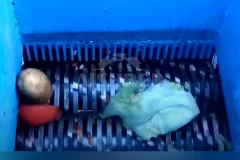
Designing a dual-shaft food waste shredder machine for vermicomposting involves creating a robust and efficient system capable of handling various organic waste types. This approach optimizes the vermicomposting process by producing a uniform and easily digestible material for worms, thus accelerating compost production and enhancing its quality. The dual-shaft design is particularly effective for shredding because it offers more torque and can process tougher materials compared to single-shaft shredders. Below is a comprehensive guide on developing such a machine, focusing on its design, construction, and application in a vermicomposting setup.IntroductionVermicomposting is a sustainable method to convert organic waste into high-quality compost through the action of worms. A dual-shaft food waste shredder is pivotal in preparing the waste by reducing its size, which facilitates quicker decomposition and easier consumption by the worms. This project aims to build a machine that is both efficient in shredding
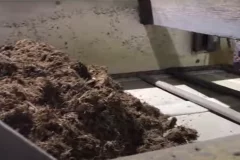
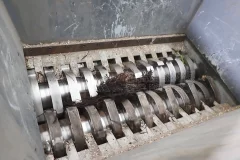
What Equipment Is Used to Shred Wet Bagasse
2024-01-21Shredding wet bagasse, which is a fibrous byproduct of sugarcane processing used in various industrial applications, requires specialized equipment to handle its moisture content and fibrous nature. Here's an overview of the types of equipment typically used for this purpose:Hammer Mills: A common choice for shredding bagasse, hammer mills use rotating hammers to break down the material. They are effective for wet bagasse because they can handle materials with high moisture content. The high-speed rotation of the hammers crushes and shreds the bagasse into smaller pieces, making it more manageable and useful for further processing.Twin-Shaft Shredders: These shredders have two counter-rotating shafts with cutting discs that intermesh to tear apart the bagasse. Twin-shaft shredders are particularly effective for wet, bulky, and fibrous materials like bagasse, providing efficient size reduction.Single-Shaft Shredders: Although less common for very wet materials, single-shaft shredders can be used for bagasse
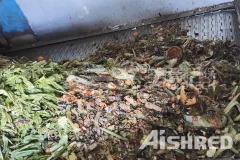
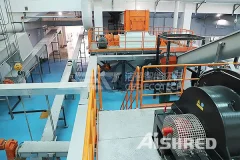
A biodegradable waste shredder is an essential tool in the management of organic waste materials, such as food scraps, yard waste, and other biodegradable items. These shredders play a crucial role in helping the environment in several ways:Enhanced DecompositionBiodegradable waste shredders break down organic materials into smaller, more manageable pieces. This increased surface area facilitates the decomposition process, allowing microorganisms to work more efficiently. As a result, the organic waste decomposes faster, reducing the time it spends in landfills or incinerators.Reduction in Landfill WasteShredding biodegradable waste decreases its volume, meaning less space is needed in landfills. This reduces the burden on landfill sites and extends their lifespan. Additionally, reducing landfill usage helps prevent the emission of harmful greenhouse gases like methane, which are produced when organic waste decomposes anaerobically in landfills.Reduced Transportation CostsSmaller and lighter shredded organic
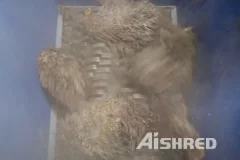
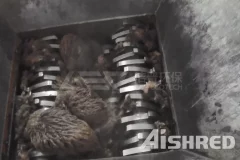
Empty Fruit Bunch Palm Oil Shredder Machine
2023-09-21An empty fruit bunch (EFB) palm oil shredder machine is used to shred and reduce the size of empty fruit bunches, a byproduct of palm oil extraction. These shredder machines are designed to efficiently process and prepare EFBs for various applications, such as biomass fuel production, composting, or mulching. Here are some key points to consider regarding EFB palm oil shredder machines:Working PrincipleEFB shredder machines typically use rotating blades or hammers to shred the tough and fibrous empty fruit bunches into smaller pieces or fibers.The shredding process reduces the volume of EFBs, making them easier to handle and process further. ApplicationsBiomass Fuel Production: Shredded EFBs can be used as a raw material for biomass fuel production, such as EFB pellets or briquettes, which can be burned in biomass power plants.Composting: Shredded EFBs can be added to composting piles to improve the composting process and create nutrient-rich organic fertilizer.Mulching: Shredded EFBs can be used as mulch in
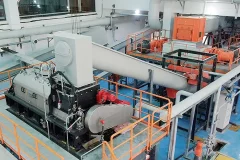
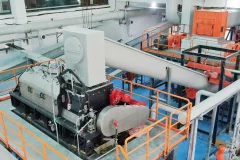
Organic Waste Processing
2022-03-03Organic waste is one of the last things that should end up in landfills, as it can be easily transformed into feed, fertilizer, or biogas with simple processing. However, the reality presents challenges as a significant amount of urban organic waste accumulates and causes environmental pollution due to insufficient disposal capacity, leading to the production of biogas, wastewater, and foul odors. Additionally, many organic waste streams are contaminated with non-organic components, posing a challenge in efficient separation.GEP ECOTECH's organic solid waste solution offers a complete suite of technologies for handling organic waste, including shredding, dewatering, sorting, bioprocessing, and safe disposal. Our comprehensive technical solutions also encompass the management of gases and liquids generated during the process.

